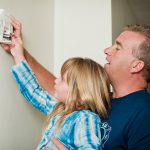
How Christmas Trees Impact Indoor Air Quality
There’s plenty to love about having a live Christmas tree in your home. Buying a real tree supports local farms, they’re better for the environment than artificial trees and, of course, they give your home that pine-fresh scent. Unfortunately, they often harbor hazardous allergens that can greatly reduce the quality of air in your home and cause allergic reactions for you and your loved ones.
Christmas trees do not produce pollen in the winter; rather, what causes these allergic reactions are the mold, dust, pollen and other allergen spores that have collected on the tree while in the field or on the sales lot. Live Christmas trees can carry more than 50 species of pathogenic mold spores, which can multiply rapidly in the cozy warmth of your living room.
The average healthy home has about 500-700 mold spores per cubic meter. According to a study done by the American College of Allergy, Asthma & Immunology, having a live tree in your home for two weeks can increase the number of mold spores in your home to over 5,000 per cubic meter.
Mold allergies affect up to 15 percent of the population and can cause symptoms such as headache, nasal stuffiness and irritation of the nose, eye or throat. Reactions to mold allergens can even trigger asthma attacks, or asthma-like attacks in those without the condition.
Live trees aren’t the only culprits in the fight against indoor holiday allergens, though. Other decorations such as ornaments, lights and wreaths (both natural and artificial) can accumulate dust or mold spores while in storage in your home. Artificial wreaths and trees may also contain materials subject to offgassing, which is when gasses that have been dissolved, trapped or absorbed in the materials are released into the air.
However, this doesn’t mean you can’t still decorate your home for the holidays. Here are some tips for offsetting the effects live Christmas trees and other decorations can have on your indoor air quality.
Purify your air
Having an indoor air purifier in the room with your Christmas tree can remove mold, pollen and dust particles from the air. If you have an artificial tree and are worried about offgassing, be sure to use a purifier designed to remove airborne chemicals from your home environment. You may also want to change the air filter in your home.
Clean your decorations
Many Christmas tree farms have a mechanical tree-shaker that shakes the tree loose of dead needles, as well as some of the dust and mold particles that have accumulated.
After you’ve brought your tree home, hose it off with water, or spray it down with a vegetable and fruit wash and let it dry completely outside before bringing it indoors. Be sure to wear gloves while cleaning your tree in order to avoid contact with hazardous allergens or sap.
Wipe down artificial trees and decorations with a dust cloth, and wash any tree skirts, table runners or other linens in hot, soapy water. You’ll also want to go through the same process with the decorations after the holidays before storing them for next year.
Be sure to store decorations in sealed plastic containers, not cardboard boxes. Cardboard can encourage the growth of mold, mildew and other allergens, especially when stored in spaces that are not heated and cooled or moisture-controlled, such as garages or attics.
Following these tips will help protect the air quality in your home from reaching hazardous levels, and ensure you can enjoy your decorations throughout the holiday season. Don’t let indoor allergens be the Grinch that stole your Christmas decorations.
For more information on improving the air quality in your home all year round, contact Barineau Heating & Air Conditioning at (850) 580-4029 or email us here.




